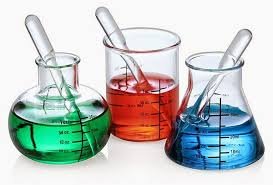Chemistry and Computer Technology: Powering Innovation
Welcome to our website dedicated to the exciting fusion of chemistry and computer technology. The combination of these two fields has revolutionized the way we understand and explore the world of chemistry. Join us as we dive into the intersection of chemistry and computer technology, uncovering the incredible applications and advancements that are propelling scientific discovery and innovation.

- Molecular Modeling and Simulation: Computer technology plays a pivotal role in molecular modeling and simulation. Chemists utilize advanced software and algorithms to simulate the behavior of molecules, predict their properties, and understand complex chemical reactions. These simulations save time and resources in experimental research and provide valuable insights into molecular structures and interactions.
- Computational Chemistry: Computational chemistry leverages computer technology to solve complex chemical problems. Chemists use sophisticated algorithms and software tools to study chemical systems, perform quantum mechanical calculations, and explore chemical reactions. Computational chemistry accelerates research, enabling scientists to make predictions and design new molecules with precision.
- Data Analysis and Visualization: Computer technology enables powerful data analysis and visualization in chemistry. Chemists leverage computational tools and statistical methods to process and analyze large datasets, extract meaningful insights, and visualize complex chemical structures and properties. These techniques enhance the understanding and interpretation of experimental data.
- Cheminformatics and Chemical Databases: Computer technology drives cheminformatics, the field that combines chemistry and information technology. Chemists use databases and software tools to store, retrieve, and analyze chemical information. Cheminformatics facilitates the organization of chemical data, the design of novel compounds, and the exploration of chemical space for drug discovery and materials research.
- High-Performance Computing: Chemistry relies on high-performance computing systems to tackle complex calculations and simulations. Chemists harness the power of supercomputers and parallel computing to perform computationally intensive tasks, such as molecular dynamics simulations and quantum chemistry calculations. High-performance computing accelerates scientific research and enables the exploration of complex chemical systems.
- Artificial Intelligence and Machine Learning: Computer technology is transforming chemistry through artificial intelligence (AI) and machine learning. AI algorithms can analyze vast amounts of chemical data, predict properties, and assist in drug discovery and materials design. Machine learning models learn from data to make accurate predictions and optimize chemical processes, contributing to more efficient research and development.
- Virtual Laboratories and Education: Computer technology enables virtual laboratories and online education platforms, revolutionizing chemistry education. Students can explore virtual experiments, interact with simulations, and gain hands-on experience in a virtual environment. Online platforms provide access to educational resources, lectures, and collaborative tools, expanding the reach of chemistry education.
At our website, we explore the dynamic fusion of chemistry and computer technology, uncovering the incredible applications and advancements that are driving scientific discovery and innovation. Join us as we delve into molecular modeling and simulation, computational chemistry, data analysis and visualization, cheminformatics and chemical databases, high-performance computing, artificial intelligence and machine learning, and virtual laboratories and education. Welcome to a place where chemistry and computer technology converge to power innovation in the world of chemistry.

